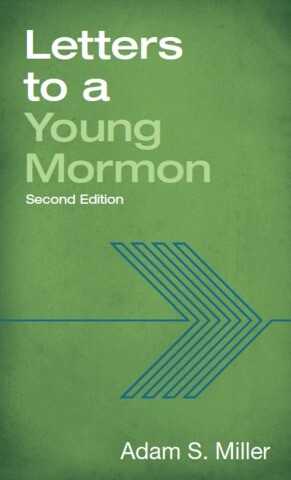Unveiling the mysteries of the kingdom, the temple will initiate you into what you do not know. It will acquaint you with your own ignorance. It will, with little explanation, commend to your care a series of undeciphered stories and symbols that you must neither dismiss nor explain but keep.
Dear S.,
My mom and dad were married in 1966. To make ends meet, my dad joined the Navy. While he was at sea, missionaries knocked on my mother’s door. “I think my husband’s a Mormon,” she said. My dad came home, and he was surprised. My older brother was born in 1969 and my older sister in 1971. They went to church together. In 1973, they packed themselves and a cooler full of bologna sandwiches into a car that I wouldn’t trust for trips to the grocery store and drove 2,000 miles from Pennsylvania to Salt Lake City. They were all four sealed in the Salt Lake Temple that May. Then, marshaling nickels and dimes, they made the long drive home. When I was born two years later, I came stamped and sealed, already bound by promises I hadn’t been present to make and already overwritten with names and blessings I had in no way earned. My little sister, born two years after that, came bundled the same way.
From the start, these powers and prayers and priesthoods were at work in my life. And from the start, they were preparing me for one thing: to see the face of God.
Two priesthoods were revealed to Joseph Smith, a lesser and a greater. While the lesser is preparatory, the greater “administereth the gospel and holdeth the key of the mysteries of the kingdom, even the key of the knowledge of God. Therefore, in the ordinances thereof, the power of godliness is manifest. And without the ordinances thereof, and the authority of the priesthood, the power of godliness is not manifest unto men in the flesh; for without this no man can see the face of God, even the Father, and live” (D&C 84:19–22). As Mormons, we rightly place great emphasis on our rituals. Baptisms, sacraments, ordinations, washings, anointings, endowments, sealings: our ordinances give order to our desires, and they clear space in our lives for the mysteries of the kingdom. We return to them again and again because they are keys to the mysteries and because God’s power is manifest there. These ordinances have the power to open and close. They are doors that open a way out, doors that usher us into unfamiliar places, and doors that close behind us. You’ll know an ordinance worked when, having passed through its door, you’re no longer sure where you are.
This is especially true with the temple. Our baptisms, sacraments, and ordinations are public, but our washings, anointings, endowments, and sealings are not. These are attended instead by a compelling privacy. The temple is a place apart. In the stillness of the temple, we wear white pants and dresses, white robes and sashes, white caps and veils. In the temple, God prepares us to be endowed with faith and sealed in love by washing our arms and hands and heads, by anointing us with oil, and by giving us new clothes. In the temple, we’re given an endowment. An endowment is a gift. God gives this gift in the form of a long story about the creation of the world, about Adam and Eve, about evil and suffering, about promises and sacrifices, and about what we must do to pass through the veil and see God’s face. In the temple, we imagine what it would be like to be Adam and Eve. We sit for an hour and watch and listen and imagine what it would be like to make the promises they made, to accept the symbols God entrusted to their care, and to receive the graces that followed. And then we are invited to do as they did. Finally, in the temple, brides and grooms kneel at altars and clasp hands as a sealer ratifies their marriage with God’s own binding seal. And once we’ve passed through these veils for ourselves, we do all this again (and again) for our dead.
The work we do in the temple is different from the kind of pragmatic work we do at church on Sundays. Where our churches are simple and spare, our temples are layered with murals, carvings, and symbols. Where our churches are down-to-earth and plainspoken, our temples are filled with allusions, allegories, and sacred gestures. Growing up in the warm, shallow pools of our Sunday services may do little to prepare you for the temple’s deep and bracing waters. Compared to the worn predictability of our Sunday School lessons, many members first find the temple strange. I suppose this is as it should be. The temple is strange. It does not belong to this world. The temple is a door and, if you pass through it, you will arrive someplace you’ve never been. The aim of the temple is to initiate you into the mysteries of the kingdom, and before you can solve these mysteries you must encounter them as just that: unsolved mysteries.
Unveiling the mysteries of the kingdom, the temple will initiate you into what you do not know. It will acquaint you with your own ignorance. It will, with little explanation, commend to your care a series of undeciphered stories and symbols that you must neither dismiss nor explain but keep. In connection with these mysteries, you will be asked to make covenants with the Lord. You will promise to keep the commandments, practice chastity, and live the law of consecration. Here, the temple is a template: born into the undeciphered strangeness of this mortal world, our willingness to make and keep simple promises, however trying, is the thread that wends us through it. In the temple, we practice wending through mystery by way of promises. Then, when we get home, we continue doing the same.
Picture the temple as that vanishing point where all the world’s apparently parallel lines converge. In the temple, whole worlds of people, living and dead, cross paths. Performing rituals for our dead, we work with symbols and stories we don’t quite understand for the sake of great uncles and third cousins we don’t yet know. We take what is left of their lives and solemnly intertwine it with all that is available of ours. We offer our dead choices they never had, and we stand in their shoes to see more of what we’ve never seen.
In the Garden of Eden, God showed Adam and Eve two trees: the tree of knowledge and the tree of life. We daily eat more fruit from the first as we struggle to know good from evil. But the second tree, the tree of life, is not to be eaten but grown. In the temple, we plant the seeds of this tree and wait. We water it, tend it, and dung it. We nourish the roots and graft wild branches into it. Line by line, name by name, marriage by marriage, family by family, we gather and grow the world’s family tree and seal countless generations of our dead to countless generations of children yet to be born. This work is essential. Without a welding link of some kind, the whole earth will be wasted. “We without them cannot be made perfect; neither can they without us be made perfect” because our salvation requires that “a whole and complete and perfect union, and welding together of dispensations, and keys, and powers, and glories should take place, and be revealed from the days of Adam even to the present time” (D&C 128:18).
In the temple, we are introduced to father Adam and mother Eve, and as we seal ourselves to them, God’s face is revealed. The tree of life is the family tree: God is the root of that tree and we are its branches.
Love,
A.
Lead image from lds.org
Get more powerful insights with Letters to a Young Mormon.
This book is composed as a series of letters.The letters are meant for a young Mormon who is familiar with Mormon life but green in his or her faith. The author, philosophy professor Adam S. Miller, imagined himself writing these letters to his own children. In doing so, he struggled to say his own piece about what it means to be—as a Mormon—free, ambitious, repentant, faithful, informed, prayerful, selfless, hungry, chaste, and sealed.
The letters do little to benchmark a Mormon orthodoxy. That work belongs to those called to it. Here, Miller's work is personal. He means only to address the real beauty and real costs of trying to live a Mormon life and hopes to show something of what it means to live in a way that refuses to abandon either life or Mormonism.




